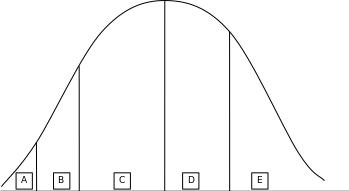Diffusion of innovation describes how a new idea, behavior, or item (an innovation) is disseminated to a population in a given period of time through specific avenues of communication (Rogers, 2003). Innovations are not always adopted even when they have obvious and clear-cut advantages and Rogers (2003) identifies four factors of diffusion: time, the social system, the innovation, and the communication channels.
For something to qualify as an innovation it does not have to be temporally recent as what matters is that people perceive it as new. An innovation therefore is that which is perceived as new regardless of its actual age. A communication channel refers to the course a message takes to get from a source to the receiver and examples are interpersonal communication and mass media.
Time is a factor when it comes to the rate of adoption of an innovation and it forms an imperative element in understanding diffusion of innovations. The social system can be viewed as people who jointly seek a common goal.
The decision to take up an innovation usually involves five steps: knowledge, persuasion, decision, implementation, and confirmation. The knowledge stage is characterized by someone gaining initial information on what purpose the innovation serves and how it functions, albeit the information is sparse at this stage.
During the persuasion stage the person actively seeks information on the innovation and forms an independent opinion about the innovation. Rogers (2003) points out that persuasions are more affective than objective-they are based more on feelings than actual factual information. The decision stage marks the point at which someone decides whether or not to adopt an innovation for their own use.
In the implementation stage the person puts the innovation to actual practical use. Confirmation is the final stage and it involves the person making an evaluation of the decision to use the innovation. The stage is also marked by seeking of information that is of a bolstering nature in order to confirm their decision and keep using the innovation.
The success of an innovation is usually determined by five aspects: relative advantage, simplicity and ease of use, compatibility with existing values and practices, trialability and observability (Bennet and Bennet, 2003). Relative advantage is subjective to the users of an innovation and it is the perceived “betterness” of an innovation to its predecessor.
Simplicity and ease of use determine the rate of an innovation’s diffusion in the sense that innovations that are easy to understand and use are likely to have a faster rate of adoption. The extent to which an innovation is consistent with current needs and is significant to its users determines the innovation’s compatibility with existing values and practices.
An innovation that is highly relevant to the social system is likely to have a higher rate of diffusion. Trialabilty is the degree to which an innovation can be tested by the potential user before the user adopts it e.g. a car that can be taken for a test drive has more trialability than the car which cannot. Observability is basically how perceptible the results of an innovation are.
Each social system can be broken down to five categories: innovators, early adopter, late adopters, and laggards depending on how quickly each group chooses to adopt an innovation. Innovators are the quickest and laggards the slowest to adopt an innovation. The graph below is a representation of how the groups’ frequencies are broken down in a population.

Figure 1. Frequency distribution of a population according to rate of innovation adoption. This figure illustrates how the five categories of innovation adoption according to time are spread in a population.
References
Bennett, J., & Bennett, L. (2003). A Review of Factors that Influence the Diffusion of Innovation when Structuring a Faculty Training Program. Internet and Higher Education ,6, 53-63.
Rogers, E. M (2003). Diffusion of Innovations (5th ed.). New York: Free Press.